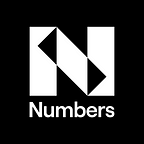Introducing Asset Profile: WEB3.0 backed digital asset LinkedIn
中文|Polski|Français|عربي|हिंदी|Portuguese|Italian
In a time where digital media infringement is at an all-time high, Certificates of Authenticities are numerous and cheap. Introducing Asset Profile, a WEB3.0 — Numbers Protocol backed digital media “LinkedIn” profile.
Since its mainstream introduction in early 2021, NFTs and their blockchain ownership have unlocked digital media like never before. Once thought of as mere mediums for information and entertainment, digital media are now viewed as unique and valuable entities. This shift has exacerbated a long-standing issue in the digital media space (unpermissioned use and copying) and highlights the flaws of NFT ownership.
NFTs and their associated multimillion-dollar industries (GameFi & Metaverse) hinge on the fact that digital assets are trustworthy. For that to happen more measures need to be taken to ensure the digital assets are in fact authentic.
Foundation CEO Kayvon Tehranian states:
“This work requires context. It’s not just blockchain. You can’t just upload an image to the blockchain and have its value…”
If blockchain records are not enough, how can we create value for digital assets? For some, the solution is a Certificate of Authenticities established from due diligence, blind trust, or regurgitation of on-chain records. At Numbers Protocol, we view the situation a little differently. If digital assets are in fact unique, then it should be possible to generate individual profiles. Not just any profile, but one fitted with a unique WEB3.0 ID, decentralized storage records, on-chain records, circumstances of creation, asset history, multiple levels of integrity, and community verification.
This is what we have done with Numbers Asset Profile, the LinkedIn page for digital assets.
Why include so much information? Our own personal profiles need to have a certain amount of information in order to communicate who we are. If the goal is to communicate the legitimacy of assets to the public, then the information on the profile should be reflective.
Let us check it out (click here to see the below example):
Asset Profile is split up into two halves. The top half of the Asset Profile contains WEB3.0 information such as the asset’s unique WEB3.0 ID, decentralized storage address, and on-chain records. On-chain records include the current owner’s wallet address and in the case of assets is an NFT: Chain ID, ViewBlock/Etherscan/BSCan record link, collection name and NFT badges.
NFT Edition shows how many NFTs have this image minted, and with the checking button, users can check the NFT on NFT Search Engine easily.
NFT Badges inform whether or not the NFT adheres to accepted standards. From left to right: “original file is bound to NFT”, “the file is decentralized”, “the metadata is decentralized”, “the NFT matches ERC721 specs”, and “asset is pinned onto WEB3.0 storage”.
It also contains various classifications that characterize the confidence Numbers Protocol has with the asset. Integrity Level checks to see if the registered asset has the following attributes: capture proof, integrity record, and recorded capture device. We look for these attributes because these records signify that the assets’ full circumstances of creation are captured on the creation and made immutable on the blockchain. Trust Scores are awarded as a part of network community verification. In the event verification has not been conducted this field will read “N/A”.
The bottom half of the Asset Profile includes more asset details such as initial registration time, caption, integrity records, capture proof, and capture device. The latest integrity record details can be viewed in detail by clicking and navigating to the blockchain explorer.
By clicking on the Chronicle Tab the full history of the asset can be viewed. This is an important feature of Asset Profile because it provides a full view of an asset from creation to marketplace listing.
As digital assets ownership and authenticity become more important, it will be crucial to provide users with a clear view of their assets. At Numbers, we have always viewed digital media as unique entities worthy of having their own unique asset profiles and as such we have integrated it into all our services. All assets registered to Numbers network via NFT Search Engine or Capture APP will have their own Asset Profiles.
With the success of WEB3.0 and its many projects hinged on a healthy digital asset economy, Asset Profile will inevitably play an integral role. We are excited to be key players in this technological renaissance. We hope you are too!
About Numbers Protocol
Numbers is building a decentralized photo network for creating community, value, and trust in digital media. Its Numbers Protocol redefines digital visual media as assets and is the backbone of a suite of tools for registering and retrieving images and videos in the Numbers network.
These include:
- Capture App: The first blockchain camera in the world that users can easily register photos and use Web 3.0 applications.
- Seal API: Developers and enterprises can implement Numbers API to register photos and access their Web3.0 addresses and certificates.
- Certificates: content authenticity certificates with on-chain provenance
- CaptureClub marketplace: Native NFT marketplace which allows photo generators to sell and stake their creations.
- NFT Search Engine: The first Web 3.0 NFT search engine that helps users verify the history of NFTs and prevent potential NFT fraud.
Numbers champion the purity of digital media and enable people to think more critically about the interactions between our images and the world around us. The goal of Numbers is to tokenize authentic photos (including images and videos) to create a decentralized photo network in Web 3.0.
